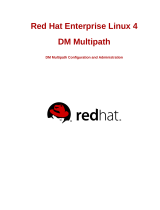
Select a Smart Copy..................................................................................................................................................... 45
Requirements for Creating Smart Copies.................................................................................................................. 46
About Snapshot Space Borrowing.............................................................................................................................. 46
Methods of Creating Smart Copies............................................................................................................................ 46
About Group Access Files.............................................................................................................................................47
About Collections.................................................................................................................................................................47
About Smart Copy Schedules............................................................................................................................................48
Advantages of Smart Copy Schedules.............................................................................................................................48
Constraints of Smart Copy Schedules............................................................................................................................. 48
Data Restoration..................................................................................................................................................................48
About Mounting Smart Copies.................................................................................................................................... 49
About Unmounting Smart Copies................................................................................................................................49
About Logging In to Smart Copies.............................................................................................................................. 49
About Logging Off Smart Copies................................................................................................................................ 49
About Restoring Data From a Smart Copy................................................................................................................ 50
Preconditions for Restoring Data................................................................................................................................50
Restoring Data Process................................................................................................................................................50
About Restoring a Soft-Deleted Smart Copy............................................................................................................50
About Managing Smart Copy Clones After Changing or Deleting Credentials...................................................... 51
Example........................................................................................................................................................................... 51
Best Practices For Using ASM/LE................................................................................................................................... 53
6 Auto-Snapshot Manager Command Line Interface.........................................................................54
Introduction to ASMCLI......................................................................................................................................................54
Entering ASMCLI Commands............................................................................................................................................54
General Command Syntax for ASMCLI...................................................................................................................... 54
Access Help on ASMCLI Commands..........................................................................................................................55
ASMCLI Search Options.................................................................................................................................................... 55
Creating and Managing Group Access Files.................................................................................................................... 57
Creating Access to a PS Series Group....................................................................................................................... 57
Listing Group Access Information............................................................................................................................... 60
Updating Access to a Group.........................................................................................................................................61
Deleting Group Access Information.............................................................................................................................63
Creating and Managing Smart Copies..............................................................................................................................64
Creating a Smart Copy the First Time........................................................................................................................64
Creating a Smart Copy................................................................................................................................................. 64
Listing Available Smart Copies..................................................................................................................................... 70
Deleting a Smart Copy.................................................................................................................................................. 72
Restoring a Smart Copy................................................................................................................................................74
Soft-Deleted Smart Copies.......................................................................................................................................... 75
Smart Copy Operations for Synchronous Replication Volumes...............................................................................77
Creating and Managing Smart Copy Schedules..............................................................................................................78
Creating a Schedule...................................................................................................................................................... 79
Listing Schedules...........................................................................................................................................................80
Running a Schedule.......................................................................................................................................................83
Updating a Schedule..................................................................................................................................................... 84
Deleting a Schedule....................................................................................................................................................... 87
Mounting and Unmounting Smart Copies........................................................................................................................88
Mounting a Smart Copy................................................................................................................................................88
Unmounting a Smart Copy...........................................................................................................................................89
Contents
5





















